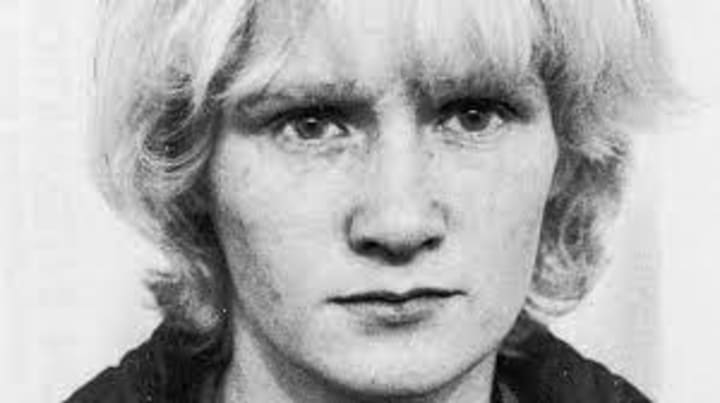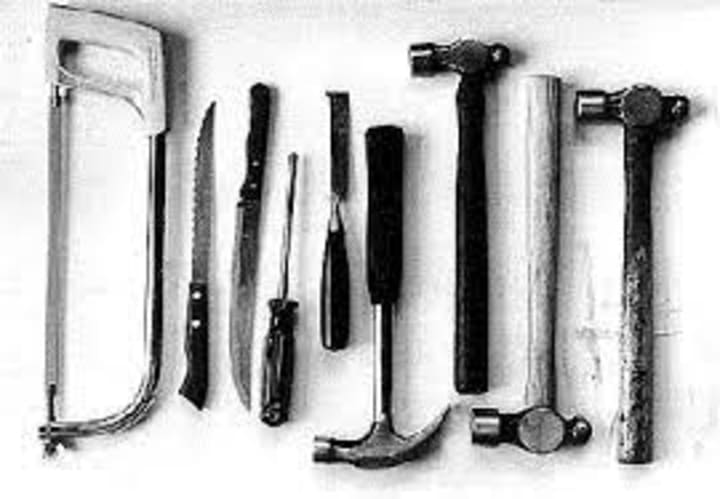
Peter Sutcliffe, also known as the “Yorkshire Ripper,” was a British serial killer who was active between 1975 and 1980. He was convicted of murdering 13 women and attempting to murder 7 others, making him one of the most notorious killers in British criminal history.
Early Life
Peter Sutcliffe was born on June 2, 1946, in Bingley, West Yorkshire, England. He was the third of six children, and his family was known to be deeply religious. Sutcliffe struggled in school and left at the age of 15 with no qualifications.
After leaving school, Sutcliffe worked in various jobs, including as a gravedigger and a factory worker. He also began to frequent prostitutes and developed a fascination with violence and sadism.

Crimes
Sutcliffe’s first known attack occurred in 1969 when he assaulted a prostitute with a hammer. He later claimed that he was “driven to kill” after hearing voices in his head.
Between 1975 and 1980, Sutcliffe carried out a series of attacks on women in the north of England, primarily in the Yorkshire area. He targeted prostitutes and women who he believed to be prostitutes, using a variety of weapons including hammers, knives, and screwdrivers.
Sutcliffe’s attacks were initially attributed to different suspects due to his use of different weapons and his tendency to change his appearance. However, in 1981, he was finally caught after being stopped by police by a prostitute in his car. The police discovered that Sutcliffe’s car had false number plates and that he matched the description of the suspect in the Ripper case.
After his arrest, police searched Sutcliffe’s home and discovered evidence linking him to the crimes. This included a hammer and a knife, as well as clothing and other items belonging to his victims. Sutcliffe also admitted to the killings during questioning and provided details about the crimes that had not been made public.

The Ripper Investigation
The investigation into the Yorkshire Ripper was one of the largest in British criminal history. Police received thousands of leads and spent millions of pounds trying to catch the killer.
One of the key pieces of evidence in the investigation was a car tire mark found near the scene of one of the murders. The mark was later matched to Sutcliffe’s car, and he was arrested and questioned by police.
During the questioning, Sutcliffe confessed to the murders. He was charged with 13 counts of murder and seven counts of attempted murder.

Curfew
The fear generated by the Yorkshire Ripper led to the imposition of a curfew on women in the city of Leeds in 1980. Women were advised not to go out alone at night, and those who did were escorted by police officers. The curfew was criticized for placing the blame on women rather than the killer, and for failing to address the root causes of violence against women.
Motive and Medical Conditions
Sutcliffe’s motive for the murders is still unclear. He initially claimed that he was on a mission from God to kill prostitutes, but later changed his story and blamed his actions on the influence of his grandfather, who had reportedly been abusive.
Sutcliffe was diagnosed with paranoid schizophrenia and other mental health conditions, which were believed to have contributed to his violent behavior. However, he also had a history of heavy alcohol consumption and drug use, which may have also played a role in his crimes.
Family and Other Victims
Sutcliffe was married to Sonia Szurma, whom he had met while she was working as a teacher’s assistant. They were married in 1974 and had two children together.
In addition to his 13 murder victims, Sutcliffe also attacked and injured 7 other women who survived their injuries. There were also a number of other unsolved murders and attacks that were believed to be linked to Sutcliffe, but which he was never charged with.
Letters and Other Evidence
During the course of the investigation, Sutcliffe sent a number of letters to the police and to the media, taunting them with clues and details about his crimes. He also sent a tape recording of himself to the police, in which he claimed to be the Ripper.
In addition, Sutcliffe left a number of other pieces of evidence at his crime scenes, including tire tracks from his car and a £5 note that had been traced back to him.

Trial and Imprisonment
Sutcliffe’s trial began on May 5, 1981, and lasted for two weeks. He pleaded not guilty to murder but guilty to manslaughter on the grounds of diminished responsibility. Sutcliffe’s trial began on 5 May 1981 and lasted for two weeks. He pleaded not guilty to murder, but guilty to manslaughter on the grounds of diminished responsibility. The defense argued that Sutcliffe suffered from paranoid schizophrenia, a mental disorder that made him unable to control his actions. However, the prosecution argued that he was a cold and calculated killer who had carefully planned his attacks.
The jury ultimately rejected the defense’s argument and found Sutcliffe guilty of 13 counts of murder and 7 counts of attempted murder. He was sentenced to life imprisonment with a recommendation that he serve a minimum of 30 years. He was initially sent to Parkhurst Prison on the Isle of Wight and later transferred to Broadmoor Hospital, a high-security psychiatric hospital, in 1984.
Over the years, Sutcliffe’s mental state has been a topic of debate. In 2010, he was diagnosed with borderline personality disorder, a condition characterized by unstable moods, behavior, and relationships. In 2016, it was reported that he had suffered a heart attack in prison and had been taken to the hospital for treatment. He has been eligible for parole since 2005, but his requests have been consistently denied.
The victims of Peter Sutcliffe are often referred to as the “Yorkshire Ripper’s victims.” They are Wilma McCann, Emily Jackson, Irene Richardson, Patricia Atkinson, Jayne MacDonald, Jean Jordan, Yvonne Pearson, Helen Rytka, Vera Millward, Josephine Whitaker, Barbara Leach, Marguerite Walls, and Jacqueline Hill. All of the victims were women, ranging in age from 16 to 47, and many were prostitutes.
During the investigation, the police received a number of letters and tapes from someone claiming to be the Yorkshire Ripper. One of the letters contained a piece of the victim’s clothing as proof that the writer was the killer. The tapes were eventually traced back to Sutcliffe, and the car he was driving at the time was found to match the tire tracks at the crime scenes. In addition, a 5-pound note found on one of the victims was traced back to a payroll package at the company where Sutcliffe worked.
The Yorkshire Ripper case had a profound impact on the people of the UK. Women were advised to stay home at night, and a curfew was imposed on the city of Leeds in an effort to catch the killer. The case also sparked a national debate about the safety of women and the adequacy of the police investigation.
In conclusion, Peter Sutcliffe, the Yorkshire Ripper, was a serial killer who terrorized the UK in the late 1970s and early 1980s. His motive for the murder was a twisted desire to rid the world of prostitutes, whom he saw as immoral and sinful. Sutcliffe suffered from several mental illnesses, including paranoid schizophrenia and borderline personality disorder, and his trial was a topic of intense public interest. Despite his claims of insanity, he was found guilty of 13 counts of murder and 7 counts of attempted murder and was sentenced to life in prison. His crimes had a profound impact on the UK, and his legacy is still felt today.





Comments
There are no comments for this story
Be the first to respond and start the conversation.